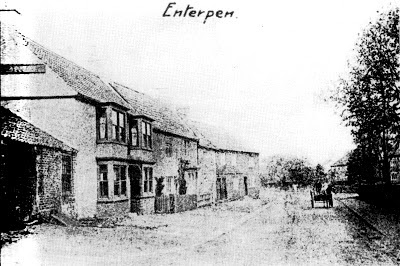Rudby parish as described in the Post Office Directory of 1872:
RUDBY-IN-CLEVELAND is a township, parish, and small village, 4 miles south-west from Stokesley, and 6 south-east from Yarm, in the west division of Langbaurgh liberty, Stokesley union and county court district, rural deanery of Cleveland, archdeaconry of Cleveland, and diocese of York, situated on the northern bank of the river Leven.
The church of All Saints is an old Gothic stone building in good repair, with a tower, nave, aisle, chancel, porch, and 3 bells; the interior contains a sarcophagus, with the date 1423, to the memory of Robert Wyclyft, rector of this parish; also a monument to the Layton family, dated 1594, and marble tablets to the memory of the Honorable George Cary, son of Lucius Henry Viscount Falkland, who died April 11, 1792, aged 81; also his wife, Isabella Cary, who died the 12th day of April, 1799, aged 81. The register dates from the year 1584.
The living is a vicarage, with Middleton and East Rounton annexed, joint yearly value £270, with residence, in the gift of Viscount Falkland and held by the Rev. Robert Joseph Barlow, M.A of Trinity College, Dublin. The vicarage is a neat modern building, situated on a commanding eminence about a mile from the village, erected by the present incumbent in 1843.
Adjoining to the churchyard, to the west, is a school-house, erected and endowed about the year 1740, at the expense of Charles Bathurst, esq., for the education of boys and girls.
The charities, bequeathed by Lady Amherst, are of £10 yearly value. Viscount Falkland is lord of the manor and chief landowner.
The soil is loamy; subsoil, strong clay. The chief crops are wheat, beans and oats. The population in 1861 was 69, and in 1871, 61; the area is 880 acres; gross estimated rental, £1,341; rateable value, £1,222.
Parish Clerk, Spencer Holmes.
The nearest post office is at Hutton Rudby.- Henry Willins, receiver. Letters arrive from Yarm at 9.35 a.m; dispatched, 4.15 p.m. Yarm is its money order office.
CARRIERS TO -
MIDDLESBROUGH – James Sidgwick, Friday
STOCKTON – John Bainbridge, Wednesday and Saturday; William Richardson & James Sidgwick, Wednesday
STOKESLEY – William Richardson, Saturday








+on+the+gun.jpg)













+Division.jpg)











-.jpg)













